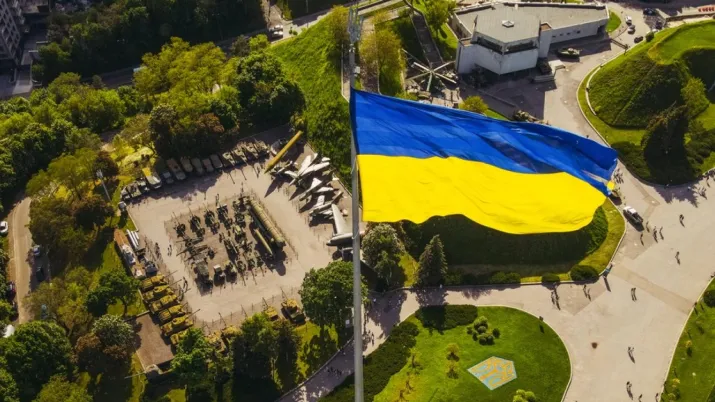Share the page
Assessment and outlook for DFI initiatives: towards greater efficiency ?
Published on
Jérémie Ceyrac Director of Investments Proparco

Private Sector & Development #43 - European development finance institutions: strategic players in changing times
This issue highlights the levers for action of European development finance institutions, who invest over €12 billion a year in the private sector in emerging countries. This issue was prepared in collaboration with the association of European Development Finance Institutions (EDFI).
Over the past decade, health, climate and geopolitical challenges have increased exponentially. In response, Europe’s development finance institutions (DFIs) have stepped up their cooperation and anchored their activities firmly within the framework of the SDGs. While the overall assessment of this decade is a positive one, it also highlights the need for adjustments, which should enable European DFIs to step up their action as part of a more partnership-based approach – notably with players from the private financing sector – while continuing to fulfil their counter-cyclical role and financing the challenges of tomorrow.
Over the past ten years, the world has been confronted with major crises of an exceptional intensity.The Covid-19 pandemic compounded the climate crisis, in an especially conflict-ridden geopolitical context, reflected notably in the war in Ukraine and a fresh outbreak of conflict in the Middle East.The arrival of the new Trump administration in the United States has weakened multilateralism from the get-go and had a very direct impact on development aid – you only need to look at the recent upheavals at the United States Agency for International Development (USAID). The mindset whereby aid and solidarity should be replaced by “deals” – which would enable donor nations to justify a return on investment for their constituents – has taken hold in certain countries. European DFIs are not entirely immune to these semantics, which are putting their model under strain.
The context is rendered all the more unusual by the fact that the Fourth International Conference on Financing for Development (FfD4) will be held in Seville between June 30 and July 3, 2025 - and the Sustainable Development Goals (SDGs) and Paris Climate Agreement are celebrating their 10th birthdays. It therefore seems especially appropriate to examine the role of development finance institutions (DFIs) during this eventful decade and to consider any adjustments that would enable us to amplify their action, convey it more clearly to the public and measure the impact “per euro invested” more effectively.
STRONGER COOPERATION IN PURSUIT OF THE SDGS
During this tumultuous decade, European DFIs have clearly grasped the need to forge closer ties, reassess collective priorities and scale up their objectives. Since the adoption of the SDGs in 2015, intense cooperation has been developed between DFIs, facilitated by the need for a common framework approach. The new strategic guidelines for Agence Française de Développement (AFD) and its subsidiary Proparco also acknowledge this shift, promoting a 100% SDG project management approach (so that allocating funding to one SDG does not indirectly harm the others), and showcasing partnerships.
This enhanced coordination between DFIs covers several aspects. It can, for example, take the form of shared financial support for pivotal economic players, in a context of urgency and conflict. In 2024, Proparco, along with other institutional donors such as IFC and EBRD, provided support to the Bank of Palestine (BOP). Similarly, just a few months after the Russian invasion of Ukraine, 13 DFIs teamed up to support a new round of financing for Horizon Capital, a long-standing player in financing Ukrainian tech SMEs. DFIs contributed 86% of the $350 million raised by Horizon (to read : an article on the work of IFU, the Danish development finance institution, in emergency situations, particularly in Ukraine).
Cooperation between DFIs can also take the form of a joint initiative, decided and implemented jointly on the basis of an observation or the identification of a need. This is the case of the Africa Resilience Investment Accelerator (ARIA), which aims to unlock investment in Africa’s most fragile markets by providing a local presence, origination support, technical support services, and promoting closer ties between DFIs and their partners. From the outset, ARIA was set up as an integrated initiative within British International Investment (BII) and Netherlands Development Finance Company (FMO). It mobilizes other DFIs, including Proparco, Swedfund and Norfund (to read : an article on FMO’s work in fragile contexts).
This cooperation between DFIs towards faster, more robust action is also embodied in sometimes more formal governance structures. In 2016, EDFI, which comprises 15 European DFIs (including Proparco), created EDFI Management Company. This structure has the capacity to apply directly to European grant and guarantee programs, and to manage and coordinate facilities backed by such funding, based on priorities defined by the DFIs. It strengthens the position of European DFIs as EU partners in key areas such as climate finance (and the provision of associated European expertise), mobilizing the private sector, and development financing in fragile and war-torn countries. EDFI Carbon Sinks, a joint European guarantee program benefiting DFIs and supported by EDFI Management Company, is a good illustration of how this mechanism actually works. With more than €360 million mobilized from the European Commission thanks to EDFI Management Company, DFIs will be able to finance ecosystem service activities underpinned by carbon finance, or support the transition of agricultural and forestry practices, which require a long timeframe and sometimes a deferred financial return. Thanks to this EU package, Proparco can aim to finance natural capital, a theme in which European – and particularly French – expertise is flourishing, and which Proparco could leverage to finance projects in Southern countries. This modus operandi for mobilizing European funds makes it possible to raise more substantial resources at a lower cost through pooling – and therefore to finance part of DFIs’ initiatives with financial resources obtained collectively outside of national budgets. It is also a more efficient method as it takes the form of guarantees (which may never be called, or may even be profitable for the Commission if the funded projects are economically sustainable). It is also a way of achieving the SDGs and their application points (such as the financing of carbon sinks) which have hitherto been neglected by DFIs due to still untested economic models.
The efforts made over the past 10 years, both quantitatively and qualitatively, should therefore be welcomed: increased cooperation between institutions has significantly enhanced the efficiency and impact of European DFIs’ initiatives. Other developments – notably in the regulatory sphere – have also emerged in the last decade: for example, since 2021, the European climate taxonomy framework and the EU’s Sustainable finance disclosure regulation have harmonized the terms used to refer to impact investing, climate finance and so on. All of this work to define, label and standardize regulations helps to objectify the action of sovereign or private economic players in pursuit of the SDGs. These changes and regulatory incentives, combined with the work of development agencies over many years, have created a framework that is more conducive to investment, particularly in combating climate change. In 2022, for the first time, the commitments of “developed” countries (€116 billion per year, according to the OECD) to developing countries to compensate for damage suffered or to contribute to mitigation and adaptation efforts have actually been met (to read : an article on climate finance by BII, the British development finance institution).
ADJUSTMENTS THAT ARE STILL NECESSARY TO ACHIEVE THE OBJECTIVES
While the reasons for celebration are very real, they should not mask the fact that only 16% of SDG targets are on track to be achieved by 2030. Ten years after the Addis Ababa Conference on Financing for Development (FfD3), the Seville FfD4 represents a milestone that must be seized upon to make the essential adjustments that will accelerate the achievement of SDG objectives. Certain specific objectives are still less well funded by DFIs than others – such as SDG 14, despite the fact that it lies at the heart of the United Nations conference on oceans, to be hosted in Nice in June 2025.
To help achieve the SDGs and accelerate the transition, DFIs must meet the dual challenges of building a more partnership-based and systematic approach with private finance players, while also being in a position to take on the necessary risk to finance new solutions. A partnership-based mindset between private actors and DFIs is absolutely crucial if we are to achieve the objectives in emerging and developing countries. Private finance players manage the resources essential to financing the transition, while DFIs have expertise in the field and decades of experience in these countries. While the idea is not new, scaling up, the systematisation of reflexes and their operational deployment are slow to materialise. Moreover, while most European DFIs now aim to mobilise the private sector, their effectiveness is still too often measured in terms of the volume of financing on their balance sheet. To engage in dialogue with the major private financiers and work together to redirect financial flows, DFIs must strive for simplification and pragmatism. Without renouncing their ambitions or their exemplarity, development banks need to have a right to make mistakes, otherwise DFIs will just remain in familiar territory and target projects which, in certain cases, should be financed by the private sector. Lastly, regulators can do more to unlock energies by adapting the banking regulation framework and recognising the specific nature of DFIs’ activities, particularly to take more account of the specific features of development mandates and the benefit of blended finance.
Public opinion and governments also expect DFIs to finance the challenges of tomorrow and support for innovation is therefore becoming a key metric. It is particularly important to invest in innovative projects from the earliest stage, in sectors such as climate technologies, carbon finance, electric mobility and hydrogen. DFIs are not always sufficiently present in these sectors, sometimes due to banking-related constraints and economic models ill-suited to this objective – and the absence of the right to make mistakes, which is accorded to private actors. Their capacity to invest massively in innovation and in the adoption of new technologies implicitly raises the question of their added value, their role and their expertise.
WHAT IS THE FUTURE FOR THE ACTION OF DFIS?
This expectation on the part of the public andgovernments can therefore also be an opportunity to finance challenges outside of traditional arrangements and to rethink the role of DFIs – in particular by focusing on the earliest stages of innovative projects.
DFIs must assume the role of anchor investor and facilitator for transactions located well upstream of the deployment phase, and their guiding principle should not be to compete with the private sector, even if this means leaving the field to commercial banks and fund managers. However, DFIs are expected to focus on non-traditional climate finance issues requiring substantial investment; this is how emerging sectors such as carbon markets, climate technologies, the circular economy and financing adaptation to climate change can be consolidated.
With regard to fragile and war-torn countries, it is even more obvious that only a collaborative approach will work. It is futile to think that each DIF can single-handedly solve the problems of fragile countries. DFIs must use their respective programmes and leverage multilateral donors with greater resources.
The sheer number of crises (political, climateand territorial) reveals the scale of the initiatives that still need to be deployed to achieve the SDGs. The fragmentation of geopolitical blocs will require working with new players who are less sensitive to political cycles, as is the case with private philanthropy, which is often faster and more innovative. The challenge for DFIs in this constantly changing world will be to maintain their role as the cornerstone of development finance. They must remain agile enough to work with public actors, philanthropists and private financiers so that as many resources as possible are invested in the SDGs. All of this is highly ambitious but realistic – DFIs often have an untapped wealth of ideas, talent, experience and networks.
DFIs therefore need to transform to increase their mobilisation capacity. They could possibly do this by focusing on new technologies to free up their currently constrained resources, particularly with a view to achieving efficiency for every euro invested and mobilised (whether with governments or private actors). By financing innovation on a larger scale – even if this means insisting upon more rights to make mistakes. We must also remove obstacles to action, which are often due to the accumulation of standards and regulations. To successfully make these adjustments in an increasingly complex world, it is essential to strengthen the partnership approach, a proof of collective intelligence, provided it does not hinder the speed of implementation, particularly with private actors in the North and South – and more specifically with those who finance the local and regional economy, such as local insurance funds, provident funds and pension funds.
It is by drawing up this largely positive assessment of the actions of European DFIs, but also by pointing out some of the necessary adjustments, that their role and added value for the future can be estimated. At a time when public budgets earmarked for development funding are being cut, the geopolitical context is becoming more complex and multilateralism is in crisis, it is essential to continue the changes initiated as part of a collective approach and to consolidate the effectiveness of European DFIs.
on the same topic



Further reading


